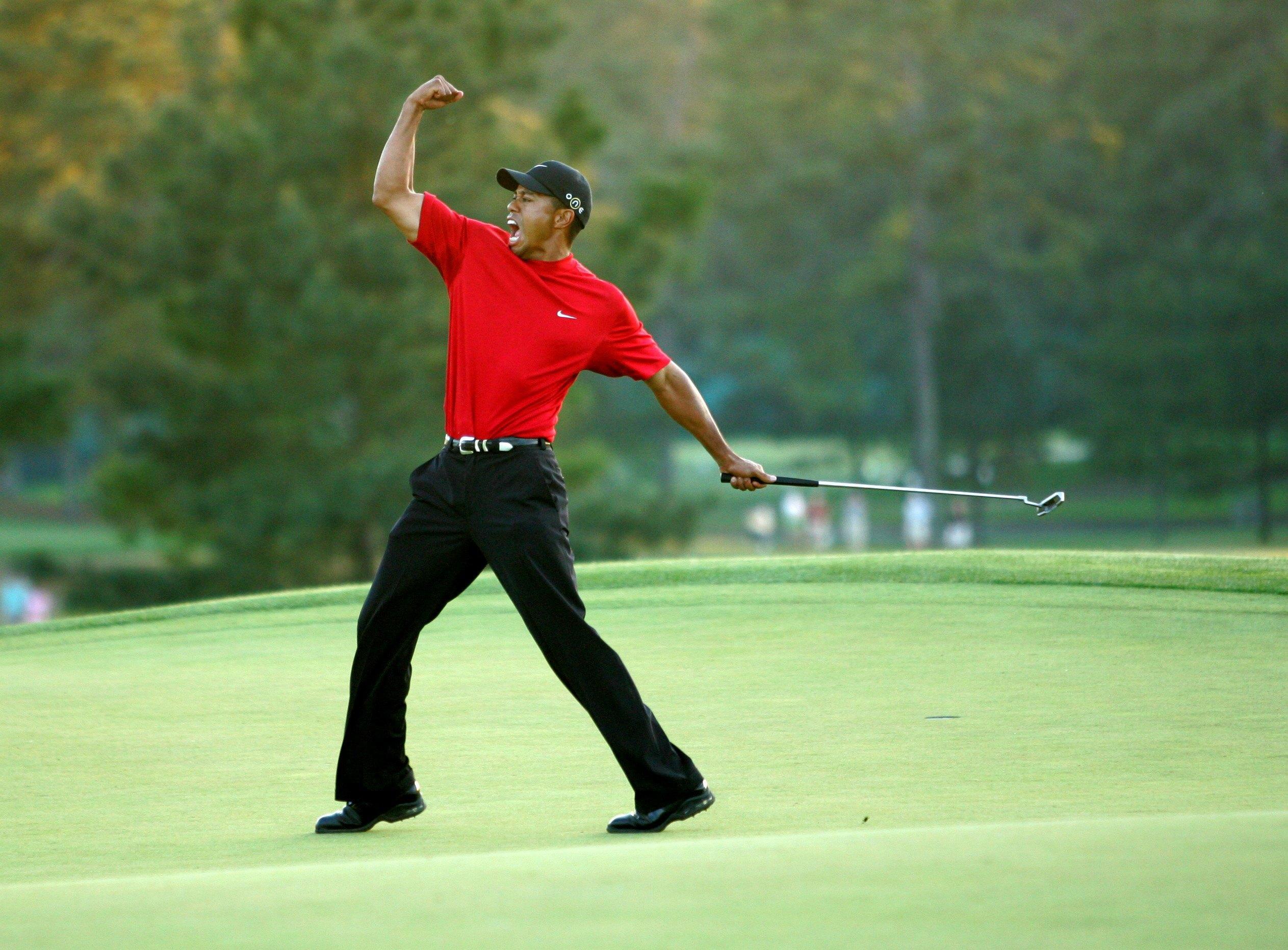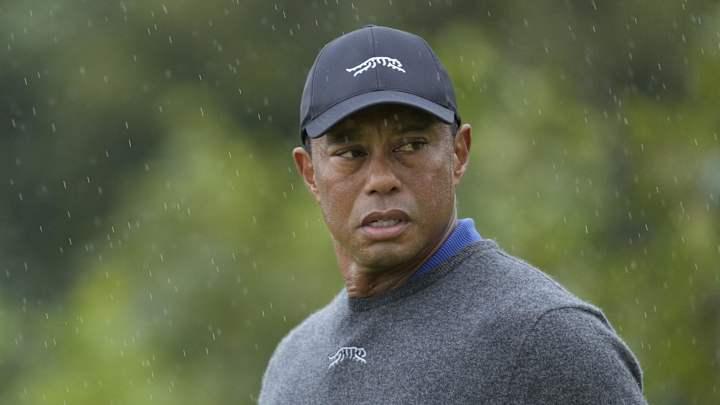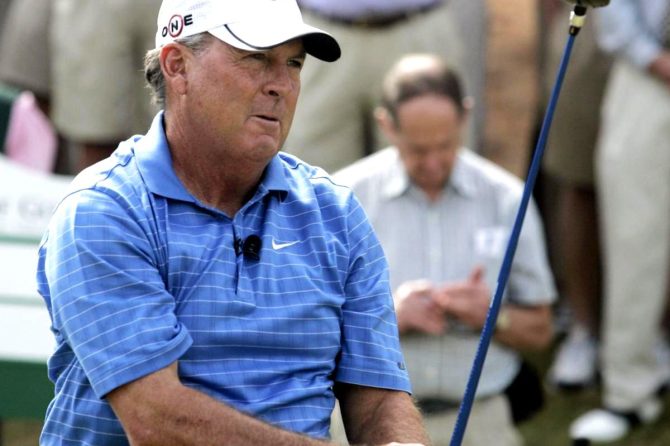Tiger Woods: A Long Journey Ahead Before PGA Tour Return
Tiger Woods has expressed that he still has “a long way to go” before he can make a comeback on the PGA Tour. The legendary golfer, who boasts 15 major championships, has not participated in competitive golf since the Open Championship in July 2022. Following a serious car accident in February 2021, he underwent surgery on his right leg in December 2022.
Woods Takes a Cautious Approach to His Return
Before the Hero World Challenge, Woods revealed that doctors have classified his ongoing plantar fasciitis as a “stress reaction,” which has significantly impacted his ability to play.
During the PNC Championship alongside his son Charlie—an event they won for the second consecutive year—Woods utilized a cart but emphasized that he is “not close” to returning fully. He stated, “The plantar issue isn’t improving; I’ve faced challenges with it.” While he’s been able to practice hitting balls and putting, walking remains problematic for him.
“It’s going to be a long road ahead,” said Woods. ”I need to resolve this plantar issue and continue building my leg strength while refining my swing.”
Setbacks and Challenges During Recovery
In recent interviews, Tiger candidly discussed the difficulties of his recovery journey. He admitted it’s been tough with numerous setbacks along the way due to multiple surgeries stemming from his car accident.
“I’m still unable to perform many activities I used to enjoy,” Woods shared. The nerve damage in his foot adds another layer of complexity; pain often hampers both practice and play without medication relief.
“It’s an ongoing struggle,” he noted. “The pain persists and doesn’t seem likely to fade soon.”
Experts Weigh In on Woods’ Comeback Prospects
The golfing community is abuzz with speculation regarding Tiger’s potential return after announcing he’s far from ready for competition again. Experts provide varied insights into whether this iconic player can reclaim past glory.
Physical Condition Concerns
Woods’ physical health remains paramount as he navigates recovery from significant surgeries on both legs and back injuries. His recent performances have shown inconsistency as regaining endurance becomes crucial for competitive play.
Mental Resilience Challenges
The psychological impact of injuries cannot be overlooked either; having not played full-field events in over two years may require time for adjustment back into high-pressure situations.
High Expectations Amidst Pressure
The immense expectations surrounding him could become overwhelming if he’s not adequately prepared mentally or physically when returning under public scrutiny.
Aging Competitors
At age 47, competing against younger players who idolized him presents its own set of challenges as they bring fresh talent and vigor onto the course daily.
| Potential Comeback Factors | Potential Barriers Against Success |
|---|---|
| Diligent work ethic & determination | Aging & injury limitations |
| A history of overcoming adversity | Diminishing physical capabilities |
| Supportive fanbase & sponsors | The weight of expectations |
Path Forward: Recommendations for Recovery Strategy
Tiger’s recent outings highlight significant hurdles during rehabilitation following life-altering injuries sustained during an accident. While commendable resilience shines through, adjustments are necessary moving forward:
- Focus on rebuilding physical strength through tailored rehabilitation programs emphasizing strength training alongside cardiovascular fitness routines essential for recovery progress;
- Cultivate patience by setting realistic goals acknowledging time needed away from competitive golf while maintaining motivation;
- Evolve playing strategies by adapting techniques focusing more on accuracy rather than sheer distance while collaborating closely with coaches;
- Create robust support networks involving professionals across coaching staff including therapists ensuring comprehensive guidance throughout this challenging journey;
- Physical Rehabilitation: Woods has undergone several surgeries, including spinal fusion, which requires extensive rehab.
- Mental Fortitude: The psychological aspect of returning to competitive golf after injuries is considerable.
- Skill Refinement: Continuous practice and feedback are essential to regain competitive edge.
- Consistency in Practice: Regular practice builds muscle memory, essential for a reliable swing.
- Understanding the Game: Strategic course management can significantly enhance on-course performance.
- Physical Fitness: A balanced fitness regimen tailored for golfers improves strength and flexibility, mitigating injury risks.
- Focus on Your Grip: A proper grip is foundational for a good swing. Experiment with different styles to find what feels right.
- Routine Practice: Establish a routine for practice sessions that includes both swing mechanics and short game work.
- Visualization Techniques: Use mental imagery to visualize successful shots, which can enhance confidence on the course.
- Stay Committed: Never underestimate the power of perseverance in golf.
- Embrace Feedback: Constructive criticism is valuable for growth.
- Balance: Maintain a healthy balance between practice, play, and recovery.

Tiger Woods: Still a Journey Ahead Before I’m PGA Tour Ready!
Tiger Woods’ Road to Recovery
Tiger Woods has faced immense challenges over the past few years, battling injuries and overcoming obstacles that have impacted his professional golf career. Despite these setbacks, Woods remains optimistic about his return to the PGA Tour, stating, “Still a journey ahead before I’m PGA Tour ready!” This underscores his commitment to healing and honing his skills.
Understanding the Challenges
Key Insights from Tiger Woods
Woods emphasizes several crucial areas that aspiring golfers should focus on:
The Benefits of Personalized Coaching
Working with a golf instructor can provide myriad benefits for players at all levels. Woods advocates for personalized coaching as a means to refine techniques and improve overall performance.
Benefits of Personalized Coaching
| Benefit | Description |
|---|---|
| Individual Assessment | Instructors analyze your specific technique to identify areas for improvement. |
| Customized Drills | Targeted exercises designed to enhance your unique skills and weaknesses. |
| On-Course Guidance | Real-time feedback during actual play to help implement strategies. |
Practical Tips to Enhance Golf Performance
Beyond coaching, Woods shares practical tips that can help golfers improve their game:
Case Studies: Players Inspired by Tiger Woods
Many golfers have drawn inspiration from Woods’ resilience and dedication. Here are a few notable examples:
Case Study: Jordan Spieth
Jordan Spieth admired Woods from a young age, studying his techniques to refine his own game. Spieth’s focus on mental strategies and relentless practice mirrors Woods’ approach to golf.
Case Study: Justin Thomas
Justin Thomas credits Woods with motivating him to push boundaries. His training regimen emphasizes fitness, reflecting Woods’ advocacy for physical preparation in golf.
The Path Forward: Key Takeaways
Tiger Woods’ journey to being PGA Tour ready is packed with lessons for all golfers. The dedication to improvement, understanding personal limitations, and maintaining a strategic approach are crucial components for success.
Final Thoughts from Tiger Woods
Woods remains positive about the future, reminding golfers that every journey is unique. With the right mindset and efforts, achieving PGA Tour readiness is within reach.





